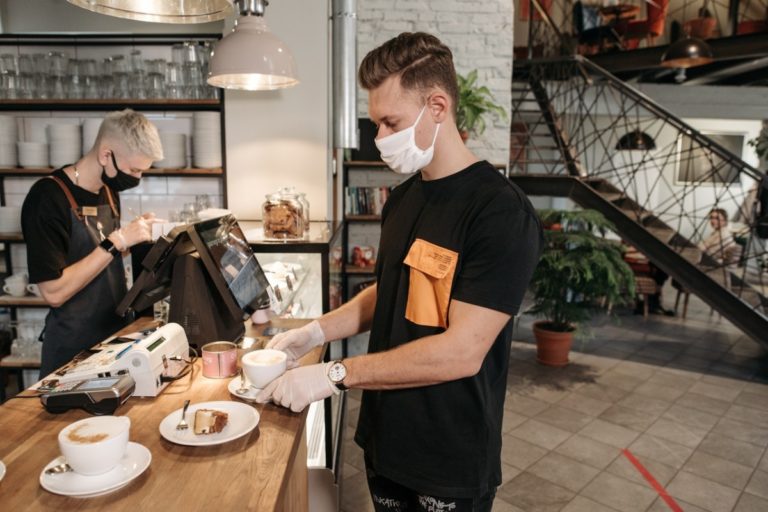America seems to be in high spirits these days. Already, in such a short period, over 100 million Americans have been vaccinated. It’s a feat. Compared to other countries, the Land of the Brave looks like it’s getting back on track and back in business. It’s getting back its top spot as the most prized nation on the planet.
You could be in jubilation too. Now that restrictions are somewhat relaxed, you’re in a better position to enjoy the things you’ve been enjoying before. And what better way to celebrate your newfound freedom than enjoying a meal with the family outside. No, it’s not about having dinner on your front lawn or your portico. It’s about eating out right inside a restaurant.
Yes, that’s true. Restaurants are opening at full capacity now. To start the ball rolling, New York Governor Andrew Cuomo has just announced that by May 19, restaurants, bars, and a host of businesses can now reopen at 100% capacity.
Yet, Gov. Cuomo’s announcements do not come with an assurance you’re free from the virus threat when you eat out. No, sir. They aren’t. You still need to practice safety protocols. If you’re wondering how to make it right and have the time of your life, here are the top frequently asked questions (FAQs) about restaurant-eating safety answered.
How far apart should the tables be?
For the nth time, government agencies have reiterated that the six-foot rule must be observed. As useful as that advice may be, it’s still not a blanket assurance you’re not getting the virus.
Indeed, it can give you false assurance. While there’s a tendency for droplets to fall to the ground from the air before reaching another person, it’s not a foolproof rule. For one, a sneeze can push aerosols 30 feet away. The same phenomena happen when someone is running.
Someone talking over the phone could generate such infectious droplets. And it gets even worse if there’s a fan or wind current. This tells you that distance of separation should not be the only way to mitigate your risk.

Are you safe if the servers wear masks?
Of course, there are other ways you can satisfy your food craving without putting your family at risk. If you’re craving Chicago-style deep-dish pizza, for instance, you can have it delivered right where you are. Even better, some top restaurants offer no-contact deliveries for greater safety.
If you pursue your plan of eating out, having servers who wear masks can give you added protection. Then again, the presence of customers who eat and talk can still put you at risk.
A good way to lower your risk is for restaurants to protect the tables with barriers. It sounds absurd, but it’s a practical solution. Screens and Plexiglass can be used for this purpose. Better yet, tables can be in separate rooms with a door (which could garner strong reactions from restaurateurs).
Having temperature screenings via infrared imaging devices are also useful. Every customer must have their temperature in order. The same holds true for employees. No employee should be allowed to work if he’s nursing a fever.
There’s just one small detail that side sweeps all that. People who have been infected by the virus may not carry symptoms but are infectious six days before they develop clear symptoms.
Are disposable utensils best?
To thwart the virus advance, you may think that a disposable utensil is best. However, know that the virus can be inactivated with regular dishwashing of utensils (e.g., plates, spoons, forks). Thus, there is no need to seek disposable ones. But that should not mean the tables need not be disinfected between uses. They should be sanitized every time.
Then there’s the case for menus. It can certainly be a point of contention. Bear in mind, however, that even if you touch an infected surface but don’t proceed to touch your mouth, eyes, or nose, you’re safe. A hand sanitizer or washing of hands should do the trick.
Can the food infect me?
This is a good question. It’s possible. But such a risk is very minimal. That’s because the COVID-19 virus is a respiratory virus. It can do maximum damage when it gets access to your lungs or respiratory system. Thus, your nose, mouth, and eyes can lead the virus there. However, when you eat food, everything goes to the stomach. Getting the infection that way is, therefore, a very slim reality.
Plus, there’s the case for cooking itself. The virus has been observed to lose its concentration when placed on various surfaces such as copper or plastic. In case food gets contaminated once prepared, cooking the food would highly likely inactivate the virus. Yes, the high temperature works to your advantage.
Eating out is a perfect way to bond with the family in these trying times. Just have everyone observe safety protocols, and you should be good to go.

